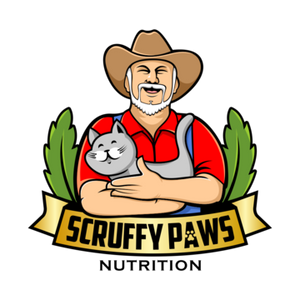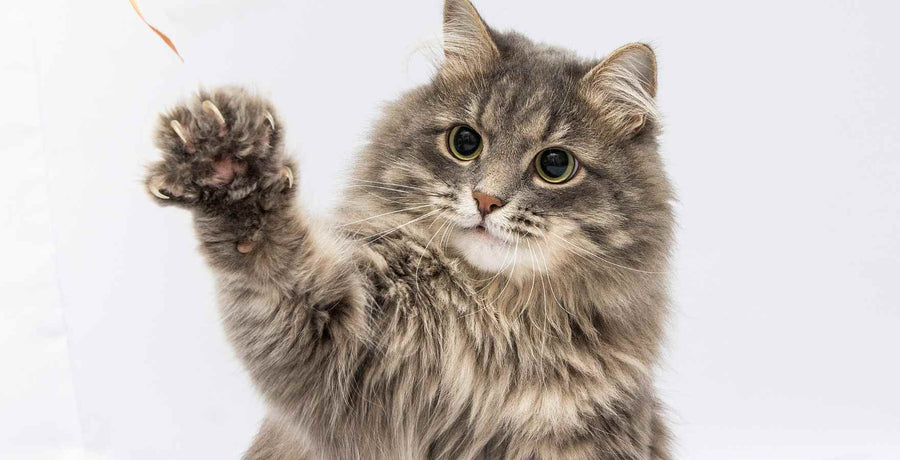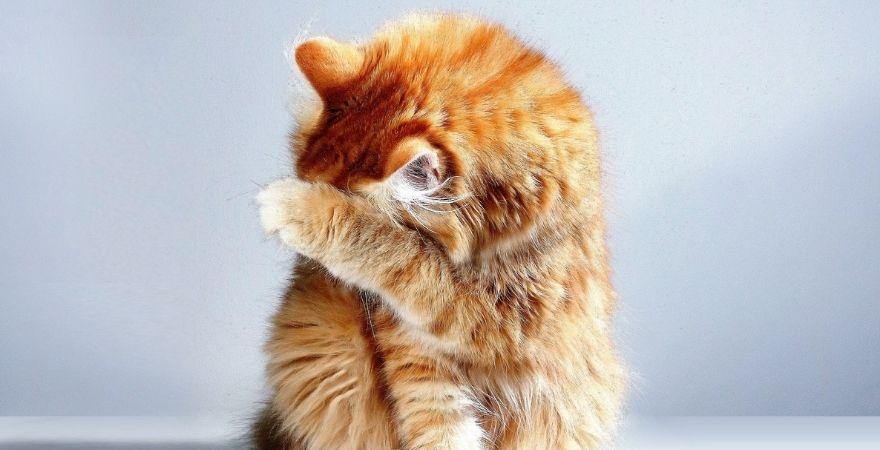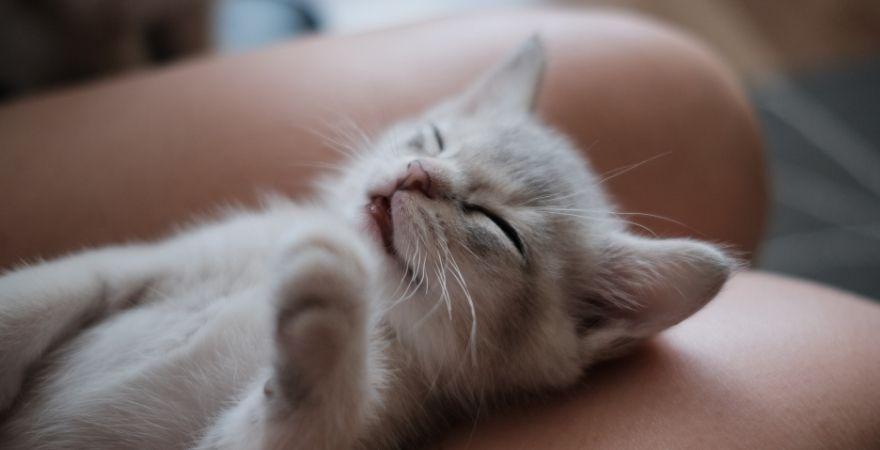If your cat has chronic kidney disease (CKD), sooner or later you’ll have to introduce your cat to a brand new diet. This diet has a few names but it’s usually referred to as the CKD diet.
It’s specifically formulated to keep your cat’s kidneys functioning well, slowing the progress of renal disease as much as possible.
So what does this diet look like, and is it really important?

THE 5 MAIN INGREDIENTS OF A CKD DIET
While the CKD diet has a lot of moving parts, there are five main components.
1. It’s Low in Phosphorus
Damaged kidneys struggle to process phosphorus.
This wouldn’t be such a big deal were it not for the fact that phosphorus is really nasty when it comes to CKD. It speeds up the disease a lot.
Bottom line, a healthy CKD diet is one where phosphorus is kept to a minimum.
2. It Has Moderate Levels Of Protein
You probably figured this out already, but cats really dig meat. I know mine are obsessed with meat in all forms, from salami to fish sticks.
Cats need protein to survive—around 26g a day for the typical house cat.
There is a problem though when it comes to cats with CKD. While cats with kidney problems still need a healthy amount of protein to maintain muscle tone and weight, too much protein will place strain on their kidneys.
A CKD diet therefore contains a carefully formulated amount of lean, healthy proteins.
3. It’s Also Moderate in Terms of Calories
Thinner cats are unhealthier cats. The research is unanimous on this one. Thin cats have a significantly shorter lifespan than cats at the optimal weight.
For this reason, CKD diets are carefully moderated in their overall calories, and are designed to help a cat reach and maintain the correct weight for his or her size and age.
4. Slightly Increased in Essential Fatty Acids
Most research indicates that essential fatty acids halt or slow the progress of CKD. While too much is a bad thing, a slight boost in EFAs is generally considered a good move for cats dealing with kidney issues.
5. Higher in Potassium
Around a third of cats with CKD have low potassium levels.
The reason is basic but tricky to manage. Cats with CKD urinate more. Urine contains lots of potassium. It’s therefore important for a CKD diet to correct this imbalance by introducing more dietary potassium.

IS THE CKD DIET REALLY THAT IMPORTANT?
Yes, it is important. But if your cat has been newly diagnosed with CKD, the following two factors are far more important in the initial stages.
Water

Cats have a low thirst drive. When they are feeling cranky, unwell or troubled, I find one of the first things that happens is they go off their water.
When you’re dealing with a sick cat, this is kind of a big deal. No creature can go too long without water, so before worrying about CKD diet formulations, please be very sure that your cat is drinking enough water.
A dehydrated cat is at a much greater risk of a whole slew of health problems.
If you can’t get your cat to hydrate, talk to a vet immediately.
Enough Nutrition to Survive
If your cat’s CKD diagnosis was triggered by rapid weight loss and a refusal to eat, your vet is likely to advise that you deal with this problem before worrying about a CKD diet.
Baby food is a frequently mentioned option for cats struggling to eat and keep down their food. It’s mild, nutritious and soft. While this is always a good option to try, you may also know of a favorite food they’re likely to eat.
Use whatever food you think will work best. Just get your cat to eat!
The key message here is, get your cat stable before worrying about long-term dietary change.
ONCE YOUR CAT’S DIET AND HYDRATION ARE STABILIZED
Once your cat is eating and drinking, it’s time to get to work. And yes, gradually migrating to a CKD diet is really important. In fact, the research indicates that a renal diet can actually double the lifespan of a cat living with CKD.
That’s a lot of years. It makes a lot of sense to make a CKD diet a priority for your fluffy buddy.
That said, it’s also important to remember that chronic kidney disease is a gradual condition. This isn’t something where you need to make radical changes overnight.
I have three pieces of advice in helping your cat with this important change.
1. Don’t Be All or Nothing About It!

I get it! You’re scared and you want to do what’s right for your buddy.
But cats are smart and intuitive. If you become odd about pushing them to eat a certain food they don’t like, the chances are you’ll have a war on your hands.
Focus on working with your cat. Do it gently.
2. Don’t Be Afraid To Experiment

There are many ways to introduce the right diet to your cat. There are all kinds of brands your vet can prescribe. It’s a really good idea to try various options and see what sticks.
Think of a human who is sick. Just because they’re unwell doesn’t mean they’re only going to want to eat baby food until they feel better. We crave variety and most cats are similarly driven.
It might help if you think of your cat as a small, furry human!
3. Do Listen…

Listen to your cat, sure. But also listen to your vet! CKD in cats is very common and the chances are, your vet has a wealth of practical, hands-on experience in how to manage the dietary transition.
If you can make the management of your cat’s renal health an ongoing conversation between the three of you, you’ll hopefully figure it out as a team.
The CKD diet is very specific, both in what it has and in what it omits. It’s often a big dietary transition, and many cats don’t appreciate rapid changes.
As doting cat-assistant, the tricky challenge for you here is to acknowledge that, yes a CKD diet is an important part of your cat’s well-being, but so are your cat’s preferences.
It’s a matter of gradual compromise until you get where you need to be.
One More Thing...
If you really want to go that extra mile in keeping your cats kidneys healthy - check out the Scruffy Paws Kidney Vitalize chews.
These delicious chicken flavour chews are perfect for all cats (whether they have CKD or not), and the active ingredients inside them (Astragalus extract & Rhemannia extract) have been scientifically backed to help reduce proteinuria, fight inflammation and generally maintain good kidney health (Click here to hear to the scientific backing of the product page)
And thats not all, take a look at what some of our customers have said about the Kidney Vitalize Chews:
“I am so happy to have found your Kidney-Vitalize Chews. My 15 year old cat Cagney was losing weight and had his blood tested. It showed he was in the beginning stages of kidney disease. My vet suggested changing his diet to a prescription kidney friendly one. I had also seen your product advertised on social media. I ordered a jar and Cagney loved it and it seems to have given him his appetite back.”
- Nancy H
“My cat bootsie seems to be doing better already! I think she has put on a little weight, more energy and hasnt had any problems urinating. I break up a chew and mix it in with her morning and afternoon feeding. Thank you so much for your product!. And Bootsie thanks you too!"
- Rita A
"I brought my Nicholas 18 years old to the vet today to have his creatine levels checked and they seem to have improved. I've had him on the chews for around a month. I'm totally thrilled with them"
- Anita S
We definitely suggest taking a look at the chews (click the button below to learn more!)









11 comments
My picky cats love these. And yes they seem more playful now. They also drink much water. Thanks
My cats have hyperthyroidism will this product be safe for them they are sisters calico and they are 10 years old these beauties are my babies.
Might want to be careful about recommending baby food for a cat. one of gerber meats has lemon in it, should say might still have, and all citrus is toxic to cats. I tried to go that way with my fur baby before Sweet Pea.